Arugula, also known as “rocket” or “rucola,” is a leafy green that has a peppery and spicy flavor. The antioxidants in arugula protect us from diseases like cancer. This veggie is also suitable for guinea pigs.
Guinea pigs can eat arugula as it is a good source of vitamins and minerals. They really love the leafy texture of this vegetable. However, due to a higher amount of calcium, it has a harmful effect on guinea pig’s urinary system. So, feed them arugula only in moderation.
Table of Content
Is Arugula Healthy for Guinea Pigs? | Health Benefits

This veggie has a good amount of fiber, and fiber is essential for good digestion in both humans and guinea pigs. Feeding arugula to guinea pigs is a natural and healthy way to work up their stomach and digestion.
The vitamin A in arugula is also beneficial for the guinea pigs. This vitamin is an antioxidant and protects from illnesses and free radical damage. Not just that, there will be less inflammation and better health when it comes to kidneys, heart, skin, lungs, and good vision.
The vitamin K in this veggie protects the bones of the guinea pigs. Since they cannot consume calcium or calcium supplements in excess, vitamin K is the best protector of their bones. If the guinea pig has some injuries, the wounds will heal much faster with this vitamin.
Also, the mineral magnesium in arugula is essential for healthy bones and muscles, which includes the heart’s muscle. Magnesium also stops any pains and tremors. Arugula also contains some protein.
The best part is that arugula has plenty of vitamin C. This vitamin is essential for the optimal health of guinea pigs. If the guinea pig has a deficit of vitamin C, it becomes prone to illnesses such as scurvy.
Low levels of fat in arugula won’t cause cardiovascular problems. Also, there are minerals such as iron and potassium that are beneficial for their cardiovascular system. Iron is good for blood and preventing anemia. Potassium is important for regulating guinea pig’s blood pressure.
The arugula has a good amount of carbs, enough for the guinea pigs’ health needs and a healthy weight. In other words, the carbs give off a fast release of energy during the day. Luckily, arugula also has a small amount of sugar and fat and no cholesterol, which means that this veggie will prevent your guinea pigs from getting obese.
Nutrition Facts of Arugula for Guinea Pigs
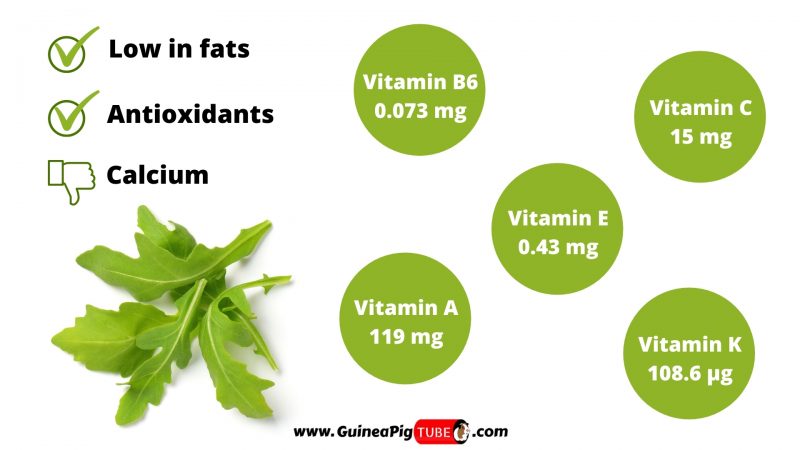
Now, let’s see all the nutrients that are contained in arugula. Per 100 g (3 oz) of arugula, there is:
- Energy – 25 kcal
- Protein – 2.58 g
- Total lipid (fat) – 0.66 g
- Carbs – 3.65 g
- Dietary fiber – 1.6 g
- Sugars – 2.05 g
- Calcium – 160 mg
- Iron – 1.46 mg
- Magnesium – 47 mg
- Phosphorus – 52 mg
- Potassium – 369 mg
- Sodium – 27 mg
- Zinc – 0.47 mg
- Copper – 0.076 mg
- Selenium – 0.3 µg
- Vitamin C – 15 mg
- Vitamin B-6 – 0.073 mg
- Vitamin A – 119 µg
- Vitamin E – 0.43 mg
- Vitamin K – 108.6 µg
- Folates – 97 µg
- Thiamin – 0.044 mg
- Riboflavin – 0.086 mg
- Niacin – 0.305 mg
- Carotene, beta – 1424 µg
- Lutein + zeaxanthin – 3555 µg
Is Arugula Bad for Guinea Pigs? | Possible Risks
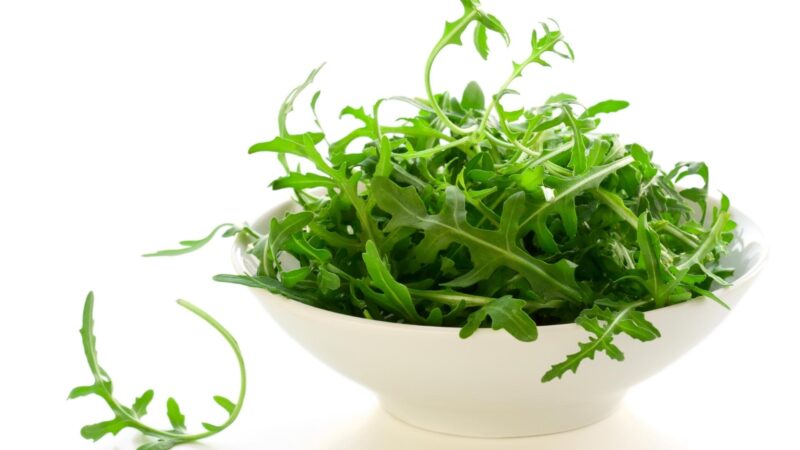
- Bladder and kidney stones – One risk of eating arugula is the calcium content. If there is excess calcium in their system, some complications can occur like muscle spasms, weight and appetite loss, frequent convulsions, dehydration, and even depression. The most serious complication is bladder stones or kidney stones.
- Digestion problems – If you feed arugula to guinea pigs very often and in huge amounts, it can cause them stomach pains, diarrhea, bloat, gases, and so on.
Serving Size and Frequency of Arugula for Guinea Pigs
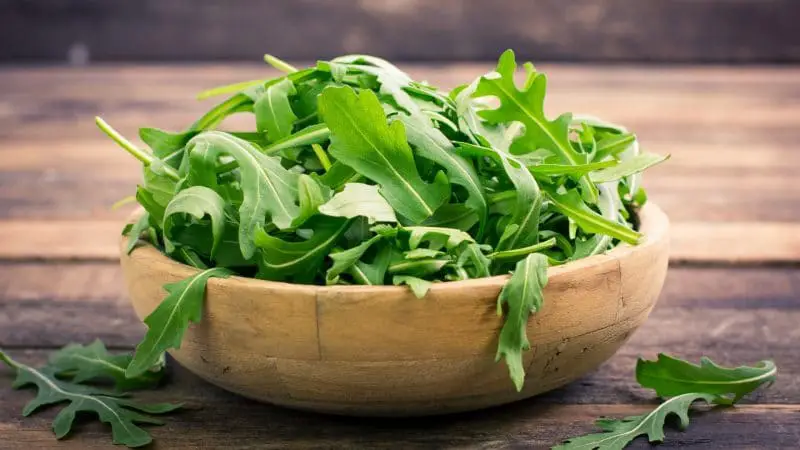
Can Guinea Pigs Have Arugula Every Day?
Guinea pigs shouldn’t eat arugula every day. We all know vegetables are useful and nutritious when compared to other types of food. However, certain veggies have to be served in moderation or a few times per week, regardless of how healthy they are.
A normal frequency of serving is only a few times per week. A normal serving of arugula is one to three times per week. On other days, you can feed the guinea pigs with some other veggies in order to mix up the foods.
How Much Arugula Can Guinea Pigs Eat?
We recommend feeding one guinea pig with few leaves of arugula. For example, feed them two bigger or three smaller leaves of arugula. Just be sure to give them raw and fresh arugula and thoroughly wash arugula with water before feeding guinea pigs.
We also recommend mixing arugula with other leafy greens or veggie leaves. A mix of veggies will create a bigger serving size and add neutral flavor to the tangy taste of arugula.
Do Guinea Pigs Like Arugula?
Generally, guinea pigs like arugula, and they enjoy eating this veggie. However, some guinea pigs don’t really love the arugula that much because of its specific taste. This veggie is peppery, a bit bitter, and this is why guinea pigs don’t binge this veggie as their other favorite foods.
Due to that, it is a great idea to combine arugula with another veggie the guinea pigs like. For example, you can mix it with green lettuce to “mask” arugula’s strong taste. Other veggies that are good for mixing with arugula are broccoli, cabbage, carrots, kale, parsley, or even spinach. On the bright side, the guinea pigs would obtain more nutrients by eating two or more vegetables at once.
More Information About Arugula and Guinea Pigs
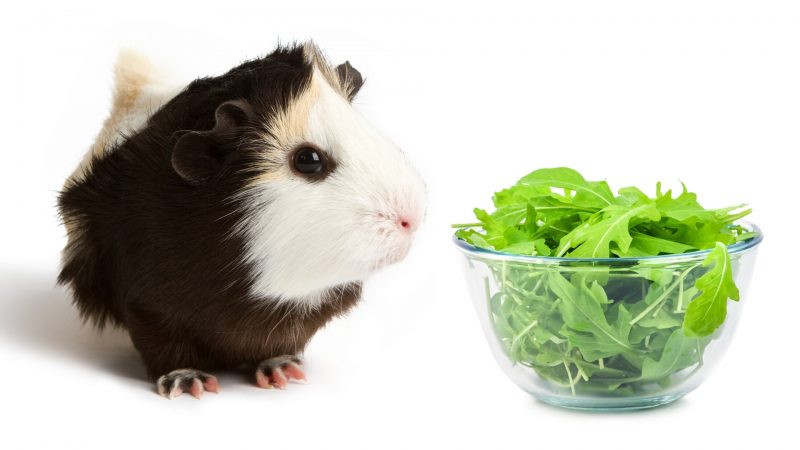
Can Guinea Pigs Eat Baby Arugula?
Baby arugula is simply arugula harvested young. It’s slightly different from mature arugula because baby arugula is milder in taste and has delicate leaves, while mature arugula is spicier.
Guinea pigs can eat baby arugula, and they will maybe enjoy baby arugula more than a mature one. The taste of mature arugula is a mix of peppery flavor, bitter, tangy, and even pungent aroma. Sometimes guinea pigs are not crazy about that taste, so baby arugula may be a better choice.
This veggie is also rich in vitamins and minerals, such as vitamin C and beta-carotene. But, due to calcium content, be sure to feed baby arugula to guinea pigs only in moderation.
Can Guinea Pigs Eat Arugula Sprouts?
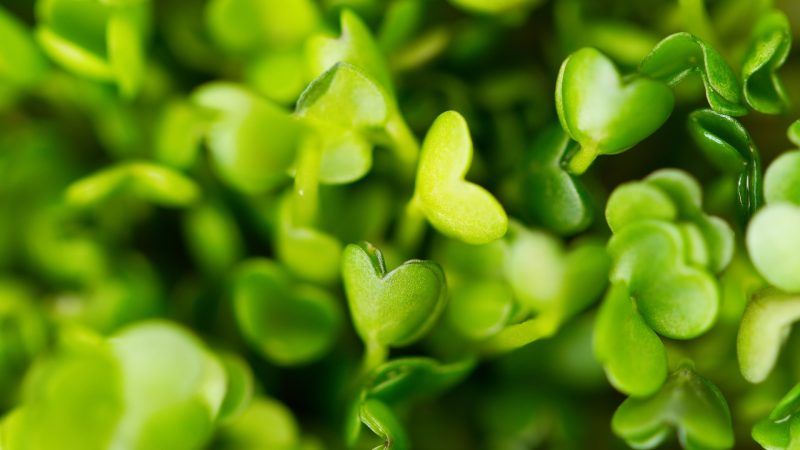
Guinea pigs can eat arugula sprouts only in moderation. This micro arugula is also milder in taste in comparison to the mature one. Arugula sprouts are rich in antioxidants, vitamins, and minerals, such as vitamin A, vitamin C, vitamin E, iron, potassium, magnesium, and many others.
You can also grow your own arugula sprouts for guinea pigs in pots. It’s easy to learn how to sow and harvest these microgreens. This way, your guinea pigs will have fresh arugula because arugula sprouts are harvested around 14 to 25 days after sowing.
Quick Facts on Arugula
- Arugula is native to the Mediterranean area. British colonists brought arugula to America.
- This spicy vegetable was popular in Ancient Rome because of its aphrodisiac properties.
- Arugula belongs to the mustard family, and some of the common names of arugula are rucola, rucoli, rugula, colewort, roquette, etc.
- Today, arugula is used worldwide as a vegetable in a salad or as a spicy herb.
- Raw arugula is often added to a pizza at the end or just after baking.
- Arugula is an annual plant and has creamy-white flowers with purple veins arranged in multi-branched clusters.
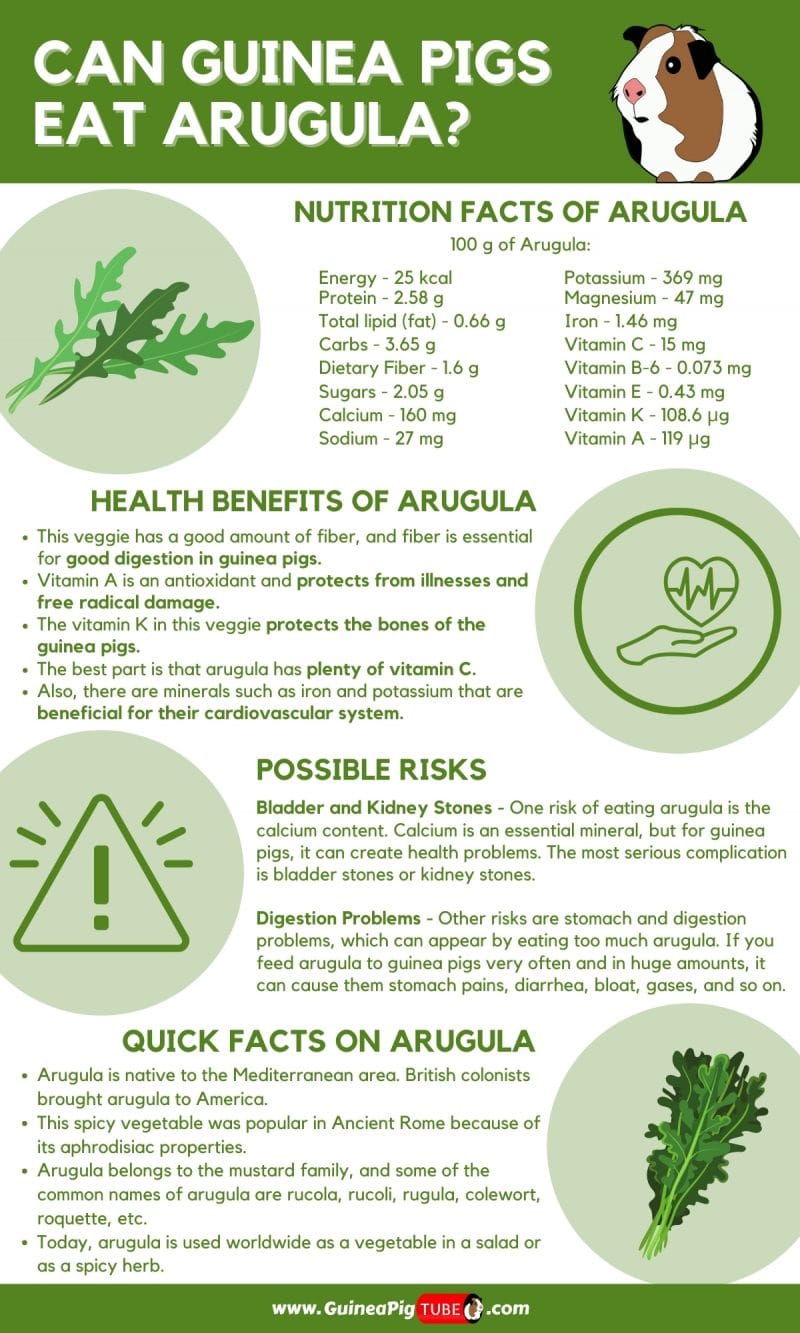
We have also made a full list of foods that guinea pigs can and can’t eat (150+ Types of Foods). Be sure to also check our recommended products page for everything you will ever need to assure a happy life for your guinea pigs. Hope this information was helpful and you have found the answer you were looking for.
List of Sources
Nutrient Requirements of Laboratory Animals: Fourth Revised Edition
The Effects of Diet on Anatomy, Physiology and Health in the Guinea Pig
